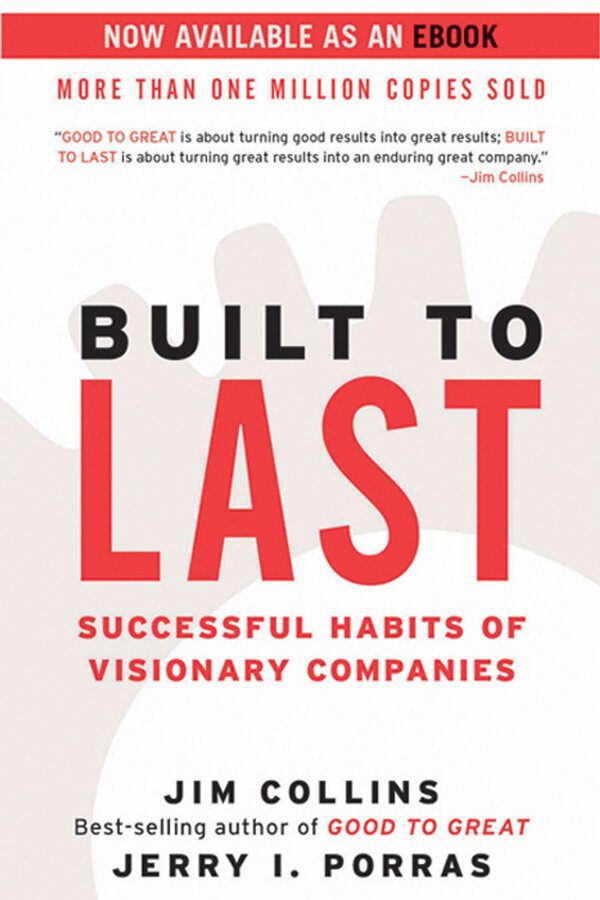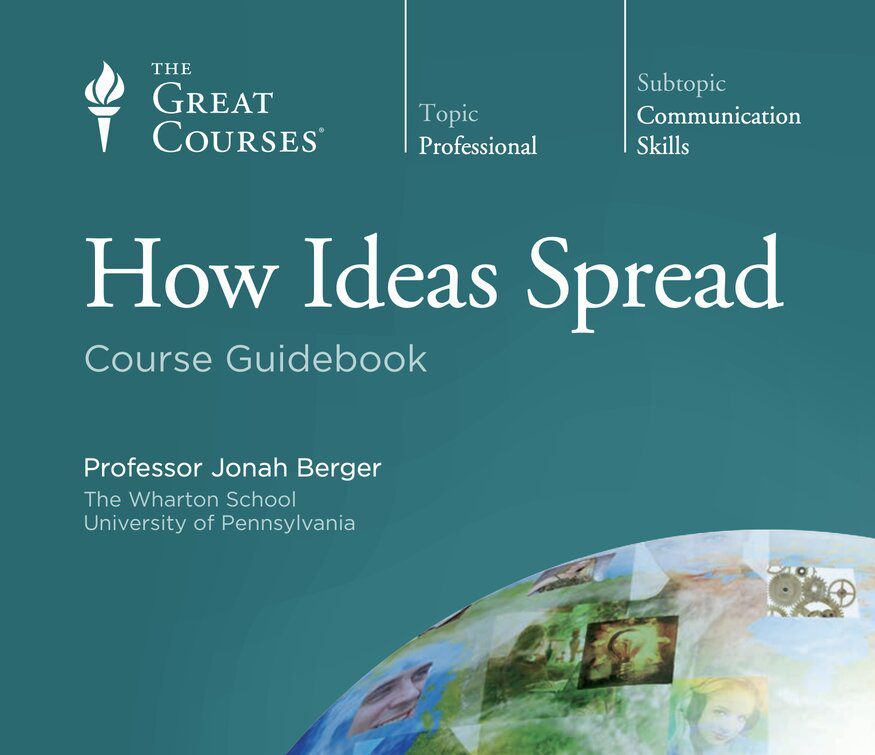Far better to dare mighty things, to win glorious triumphs, even though checkered by failure, than to take rank with those poor spirits who neither enjoy much nor suffer much, because they live in the gray twilight that knows not victory, nor defeat. – THEODORE ROOSEVELT, 1899
Print | Kindle (eBook) | Audiobook
Built to Last is a great book that outlines the results of a six-year research project at the Stanford University Graduate School of Business, conducted by James C. Collins and Jerry I. Porras. The book explores what leads to enduringly great companies, the authors examined eighteen truly exceptional and long-lasting companies and studied each in direct comparison to one of its top competitors. They examined the companies from their very beginnings to the present day — as start-ups, as midsize companies, and as large corporations.
Built to Last is one of the most influential business books have read multiple times as the concepts in the book is evergreen: Clock Building, vs Time Telling, Preserve the Core / Stimulate Progress, Big Hairy Audacious Goals (BHAGs), Try a Lot of Stuff and Keep What works, Cult-Like cultures, among others.
Here are my favourite take aways from reading, Built to Last: Successful Habits of Visionary Companies by Jim Collins:
The study found a negative correlation between early entrepreneurial success and becoming a highly visionary company. The long race goes to the tortoise, not the hare,
Visionary Companies
- Visionary companies are premier institutions—the crown jewels—in their industries, widely admired by their peers and having a long track record of making a significant impact on the world around them. All individual leaders, no matter how charismatic or visionary, eventually die; and all visionary products and services—all “great ideas”—eventually become obsolete. Indeed, entire markets can become obsolete and disappear. Yet visionary companies prosper over long periods of time, through multiple product life cycles and multiple generations of active leaders.
The Companies in the Research Study
Visionary Company Comparison Company
3M Norton
American Express Wells Fargo
Boeing McDonnell Douglas
Citicorp Chase Manhattan
Ford GM
General Electric Westinghouse
Hewlett-Packard Texas Instruments
IBM Burroughs
Johnson & Johnson Bristol-Myers Squibb
Marriott Howard Johnson
Merck Pfizer
Motorola Zenith
Nordstrom Melville
Philip Morris RJR Nabisco
Procter & Gamble Colgate
Sony Kenwood
Wal-Mart Ames
Walt Disney Columbia
Resiliency
- All visionary companies in the study faced setbacks and made mistakes at some point during their lives. Yet—and this is a key point—visionary companies display a remarkable resiliency, an ability to bounce back from adversity.
Visionary companies display a remarkable resiliency, an ability to bounce back from adversity.
Clock Building vs Time Telling
- Having a great idea or being a charismatic visionary leader is “time telling”; building a company that can prosper far beyond the presence of any single leader and through multiple product life cycles is “clock building.
- Visionary Companies concentrate primarily on building an organization—building a ticking clock—rather than on hitting a market just right with a visionary product idea and riding the growth curve of an attractive product life cycle.
- The primary output of their efforts is not the tangible implementation of a great idea, the expression of a charismatic personality, the gratification of their ego, or the accumulation of personal wealth. Their greatest creation is the company itself and what it stands for.
- The continual stream of great products and services from highly visionary companies stems from them being outstanding organizations, not the other way around. Keep in mind that all products, services, and great ideas, no matter how visionary, eventually become obsolete. But a visionary company does not necessarily become obsolete, not if it has the organizational ability to continually change and evolve beyond existing product life cycles.
WAITING FOR “THE GREAT IDEA” MIGHT BE A BAD IDEA
- If you are a prospective entrepreneur with the desire to start and build a visionary company but have not yet taken the plunge because you don’t have a “great idea,” we encourage you to lift from your shoulders the burden of the great-idea myth. Indeed, the evidence suggests that it might be better to not obsess on finding a great idea before launching a company. Why? Because the great-idea approach shifts your attention away from seeing the company as your ultimate creation.
“INTENTIONS are all fine and good, but it is the translation of those intentions into concrete items—mechanisms with teeth—that can make the difference between becoming a visionary company or forever remaining a wannabe.”
No “Tyranny of the OR” (Embrace the “Genius of the AND”)
- Highly visionary companies: They do not oppress themselves with what we call the “Tyranny of the OR”—the rational view that cannot easily accept paradox, that cannot live with two seemingly contradictory forces or ideas at the same time. The “Tyranny of the OR” pushes people to believe that things must be either A OR B, but not both.
- Instead of being oppressed by the “Tyranny of the OR,” highly visionary companies liberate themselves with the “Genius of the AND”—the ability to embrace both extremes of a number of dimensions at the same time. Instead of choosing between A OR B, they figure out a way to have both A AND B.”
“The test of a first-rate intelligence is the ability to hold two opposed ideas in the mind at the same time, and still retain the ability to function.” – F. Scott Fitzgerald
Preserve the Core/Stimulate Progress
- A visionary company carefully preserves and protects its core ideology, yet all the specific manifestations of its core ideology must be open for change and evolution. For example:
• HP’s “Respect and concern for individual employees” is a permanent, unchanging part of its core ideology; serving fruit and doughnuts to all employees at ten A.M. each day is a noncore practice that can change.
• Wal-Mart’s “Exceed customer expectations” is a permanent, unchanging part of its core ideology; customer greeters at the front door is a noncore practice that can change.
• Boeing’s “Being on the leading edge of aviation; being pioneers” is a permanent, unchanging part of its core ideology; commitment to building jumbo jets is part of a noncore strategy that can change.
“Ultimately, the only thing a company should not change over time is its core ideology—that is, if it wants to be a visionary company.”
Big Hairy Audacious Goals (BHAGs)
“A BHAG engages people—it reaches out and grabs them in the gut. It is tangible, energizing, highly focused. People “get it” right away; it takes little or no explanation.”
- Commitment to challenging, audacious—and often risky—goals and projects toward which a visionary company channels its efforts (stimulates progress).
- It’s not just the presence of a goal that stimulates progress, it is also the level of commitment to the goal. Indeed, a goal cannot be classified as a BHAG without a high level of commitment to the goal.
The “Hubris Factor
- One of the research assistants observed that highly visionary companies seem to have self-confidence bordering on hubris (the dictionary defines hubris as “overbearing pride, confidence, or arrogance”). We came to call this the “hubris factor.” In mythological terms, you might think of it as taunting the gods.”
“To set Big Hairy Audacious Goals requires a certain level of unreasonable confidence.”
- THE BHAGs looked more audacious to outsiders than to insiders. The visionary companies didn’t see their audacity as taunting the gods. It simply never occurred to them that they couldn’t do what they set out to do.”
Cult-like Cultures - Great places to work only for those who buy in to the core ideology; those who don’t fit with the ideology are ejected like a virus (preserves the core).
“Try a Lot of Stuff and Keep What Works
- High levels of action and experimentation—often unplanned and undirected—that produce new and unexpected paths of progress and enables visionary companies to mimic the biological evolution of species (stimulates progress).
- Branching and Pruning.
If you add enough branches to a tree (variation) and intelligently prune the deadwood (selection), then you’ll likely evolve into a collection of healthy branches well-positioned to prosper in an ever-changing environment. - Home-grown Management
Promotion from within, bringing to senior levels only those who’ve spent significant time steeped in the core ideology of the company (preserves the core). - Good Enough Never Is:
A continual process of relentless self-improvement with the aim of doing better and better, forever into the future (stimulates progress).
All the best in your quest to get better. Don’t Settle: Live with Passion.



Comments are closed.